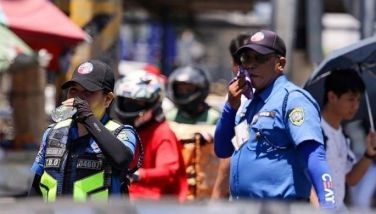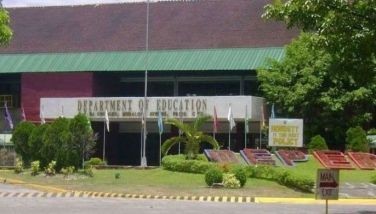After 21 years, a chick for Pag-asa
DAVAO CITY, Philippines – After 21 long years, Pag-asa the Philippine Eagle is a father.
It was a breech birth and the product of artificial insemination, but both eaglet and mom Kalinawan are doing fine.
The eaglet – the first sired by a Philippine Eagle bred in captivity – hatched at 1:55 a.m. on Feb. 9, about 48 hours after it began breaking out of its shell at the Philippine Eagle Center in Barangay Malagos, Calinan district in this city.
Weighing 158 grams, the eaglet is the offspring of Pag-asa with 29-year-old female eagle Kalinawan.
Kalinawan was rescued in Zamboanga del Sur and turned over in 2009 to the non-profit Philippine Eagle Foundation (PEF), which runs the center for the endangered bird in Malagos.
The eaglet is the 25th to be produced by the PEF since 1992, and the first sired by an eagle bred in captivity. Its gender will be known only after a few years and it has not yet been given a name.
PEF executive director Dennis Salvador said the center waited four days to announce the hatching of the eaglet because they wanted to make sure the chick would survive.
Anna Mae Sumaya, the PEF’s curator for conservation breeding, had to assist the chick in breaking out of its shell because it was in a breech position.
“I had to help it to avoid damaging the vital veins that could potentially cause its death,†Sumaya said.
Chicks normally pip through the upper broad end of an egg where the air space is located.
“In this case, the chick started to crack the shell on its side. That was why I decided to assist the chick – to keep it from hurting or even killing itself,†Sumaya said.
The eaglet will be isolated from public view in the early stage of life. Salvador said this is the way eagles bred in captivity are raised.
Salvador hailed the hatching of the eaglet as a milestone but expressed concern that the natural forest habitat of the Philippine Eagle continues to be imperiled by human activities including logging, mining and development projects.
“This accomplishment underscores the fact that breeding these birds in captivity remains difficult,†Salvador said.
He pointed out that while the center breeds Philippine Eagles to replace losses, the birds’ safety once released in the wild is uncertain.
The population of the giant raptor is placed at fewer than 1,000 nationwide, including those sighted in the wild and 34 birds kept at the Malagos center.
“We have invested a lot of time, effort and resources to conserve this majestic species, but we still need more help to really restore the Philippine Eagle’s population and its natural habitat,†Salvador said.
The Philippine Eagle replaced the maya or sparrow in 1995 as the National Bird. The eagle thrives only in the remaining forests of Mindanao and Samar in the Visayas.
- Latest
- Trending
































